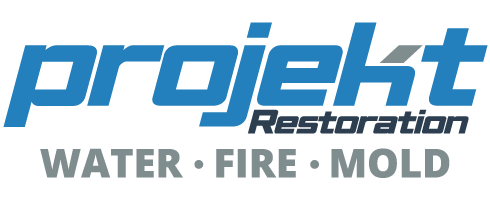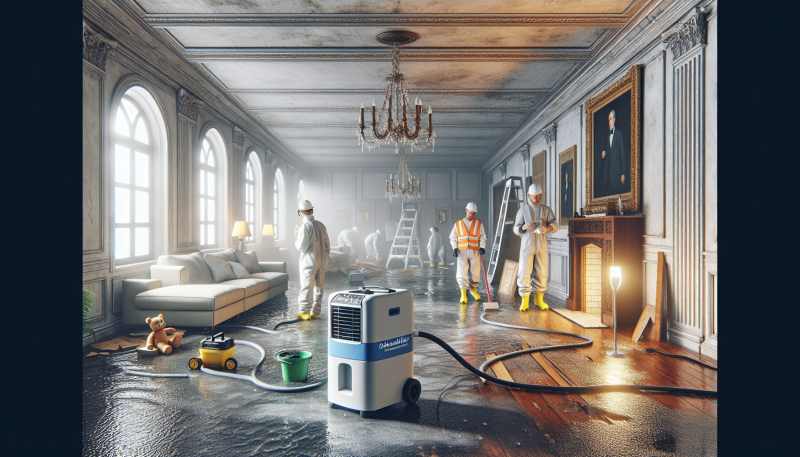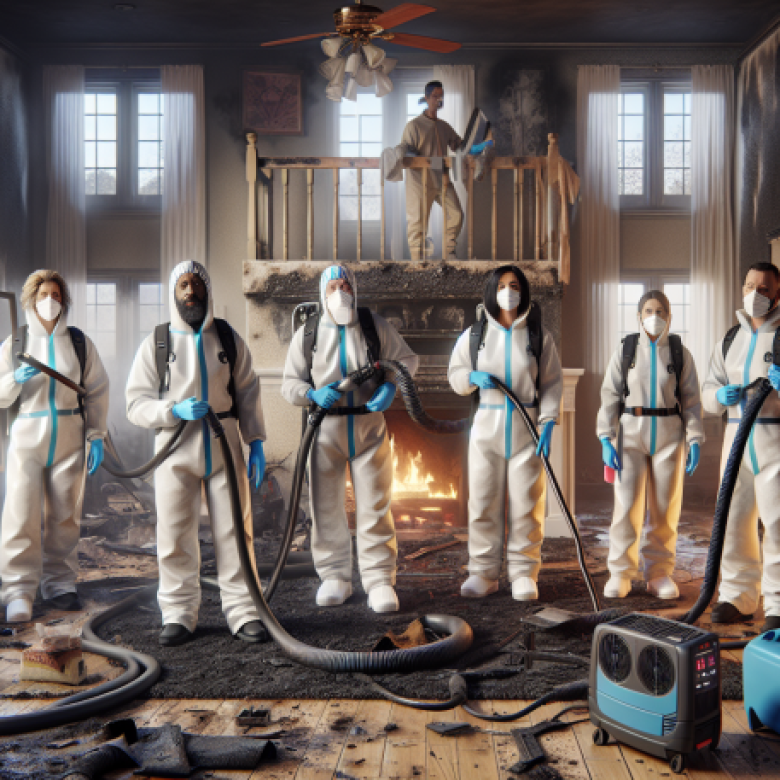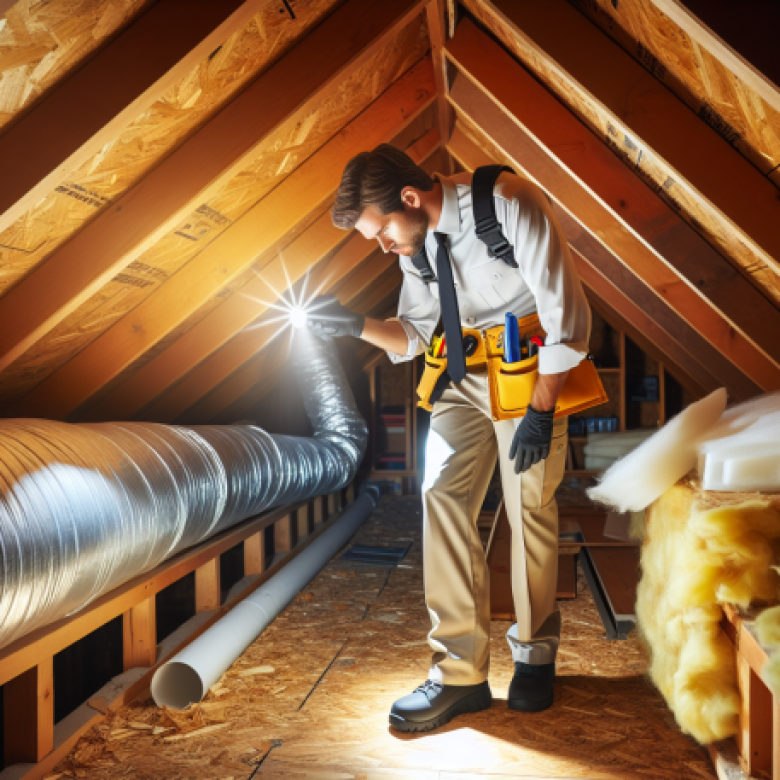Meta Description: Discover the critical role of dehumidification in restoration processes, including water damage, mold remediation, and fire damage recovery. Learn how Projekt Restoration can assist you with 24/7 emergency services.
Understanding Dehumidification in Restoration
Dehumidification plays a pivotal role in the restoration process, especially when dealing with water damage, mold growth, and fire damage recovery. But what exactly is dehumidification, and why is it so crucial?
Dehumidification is the process of reducing the moisture content in the air. This is particularly important in restoration scenarios where excess moisture can lead to structural damage, mold growth, and other issues that can complicate recovery efforts. By effectively managing humidity levels, restoration experts can create a safer and healthier environment for both residential and commercial properties.
Why is Dehumidification Important?
When water damage occurs, whether from a burst pipe, flooding, or fire suppression efforts, the moisture left behind can wreak havoc. High humidity levels can lead to:
- Mold Growth: Mold thrives in damp environments. If moisture isn’t addressed quickly, mold can begin to grow within 24-48 hours, leading to health risks and further property damage.
- Structural Damage: Excess moisture can weaken building materials, leading to costly repairs and potential safety hazards.
- Unpleasant Odors: High humidity can cause musty smells that linger long after the initial damage has been addressed.
By implementing effective dehumidification strategies, restoration professionals can mitigate these risks and ensure a more thorough recovery process.
The Process of Dehumidification in Restoration
Initial Assessment and Planning
Before any dehumidification can take place, a thorough assessment of the property is essential. This includes identifying the source of moisture, the extent of the damage, and the specific areas that require attention.
During this phase, professionals from Projekt Restoration will conduct a detailed inspection, often using tools like infrared thermal imaging to detect hidden moisture pockets. This assessment informs the dehumidification strategy, ensuring that all affected areas are addressed.
Choosing the Right Equipment
Once the assessment is complete, the next step is selecting the appropriate dehumidification equipment. There are various types of dehumidifiers, each suited for different situations:
- Refrigerant Dehumidifiers: These are commonly used in residential settings and work by cooling the air to condense moisture.
- Desiccant Dehumidifiers: Ideal for commercial properties, these units use chemical absorbents to remove moisture from the air, making them effective in low-temperature environments.
- Industrial Dehumidifiers: For large-scale water damage, industrial units can handle significant volumes of moisture and are often used in restoration projects.
Implementing Dehumidification Techniques
After selecting the right equipment, the dehumidification process can begin. This typically involves:
- Setting Up Equipment: Dehumidifiers are strategically placed in affected areas to maximize moisture removal.
- Monitoring Humidity Levels: Restoration professionals continuously monitor humidity levels using hygrometers to ensure they are within acceptable ranges.
- Adjusting as Necessary: Depending on the conditions, adjustments may be made to the equipment settings or placement to enhance efficiency.
By maintaining optimal humidity levels, the risk of mold growth and structural damage is significantly reduced.
Dehumidification in Water Damage Restoration
The Impact of Water Damage
Water damage can occur from various sources, including natural disasters, plumbing failures, or even fire suppression efforts. Regardless of the cause, the aftermath often involves significant moisture that must be addressed promptly.
How Dehumidification Helps
In the context of water damage restoration, dehumidification serves several critical functions:
- Prevents Mold Growth: By lowering humidity levels, dehumidification inhibits mold spores from settling and growing, protecting both the property and its occupants.
- Speeds Up Drying Time: Effective dehumidification accelerates the drying process for affected materials, such as carpets, drywall, and furniture.
- Improves Air Quality: Reducing moisture levels also helps eliminate musty odors and improves overall air quality, making the environment safer and more pleasant.
Case Study: Successful Water Damage Restoration
Consider a scenario where a residential property experiences flooding due to a broken pipe. The initial response involves extracting standing water, followed by the deployment of dehumidifiers. Within days, the property is dry, mold is prevented, and the family can return to their home without health concerns. This is the power of dehumidification in action.
Dehumidification in Mold Assessment and Remediation
Understanding Mold Growth
Mold is a common issue in damp environments, and its presence can lead to serious health problems, including respiratory issues and allergic reactions.
The Role of Dehumidification in Mold Remediation
When it comes to mold assessment and remediation, dehumidification is a key player. Here’s how it works:
- Identifying Moisture Sources: Before remediation can begin, it’s crucial to identify and eliminate the source of moisture that is allowing mold to thrive.
- Creating a Dry Environment: By using dehumidifiers, restoration professionals can create an environment that is inhospitable to mold, effectively stopping its growth in its tracks.
- Post-Remediation Monitoring: After mold removal, ongoing dehumidification helps ensure that humidity levels remain low, preventing future outbreaks.
Mold Remediation Process
The mold remediation process typically involves:
- Assessment: Identifying the extent of mold growth and moisture sources.
- Containment: Isolating affected areas to prevent spores from spreading.
- Removal: Safely removing mold-infested materials.
- Dehumidification: Using dehumidifiers to dry out the area and prevent future growth.
- Final Inspection: Ensuring that the area is mold-free and safe for occupancy.
Dehumidification in Fire Damage Restoration
The Aftermath of Fire Damage
Fire damage can leave behind not only charred materials but also significant water damage from firefighting efforts. This dual threat necessitates a comprehensive restoration approach.
Why Dehumidification is Essential
In fire damage restoration, dehumidification serves multiple purposes:
- Drying Out Water-Damaged Areas: Firefighting efforts often involve large amounts of water, which can lead to secondary damage if not addressed quickly.
- Preventing Mold Growth: As with water damage, the risk of mold growth is heightened after a fire. Dehumidification helps mitigate this risk.
- Improving Air Quality: Smoke and soot can linger in the air, and reducing humidity can help improve overall air quality during the restoration process.
Fire Damage Restoration Process
The fire damage restoration process typically includes:
- Assessment of Damage: Evaluating both fire and water damage.
- Water Extraction: Removing standing water from firefighting efforts.
- Dehumidification: Implementing dehumidifiers to dry out affected areas.
- Smoke and Soot Removal: Cleaning surfaces and materials to remove smoke residue.
- Reconstruction: Repairing or replacing damaged structures.
Dehumidification in Biohazard Cleanup
Understanding Biohazards
Biohazard cleanup involves the removal of hazardous materials, including bodily fluids, chemicals, and other potentially harmful substances. This type of cleanup requires specialized knowledge and equipment.
The Role of Dehumidification in Biohazard Cleanup
Dehumidification is crucial in biohazard situations for several reasons:
- Preventing Mold Growth: In environments where biohazards are present, moisture can lead to mold growth, compounding health risks.
- Ensuring Safety: Maintaining low humidity levels helps create a safer environment for cleanup crews and occupants.
- Improving Air Quality: Reducing moisture can help mitigate unpleasant odors associated with biohazard situations.
Biohazard Cleanup Process
The biohazard cleanup process typically involves:
- Assessment of the Area: Identifying hazardous materials and potential moisture sources.
- Containment: Isolating the area to prevent contamination.
- Dehumidification: Using dehumidifiers to reduce moisture levels.
- Cleanup and Disinfection: Safely removing hazardous materials and disinfecting surfaces.
- Final Inspection: Ensuring the area is safe for re-entry.
Low Pricing and Insurance Claims Assistance
Affordable Restoration Services
At Projekt Restoration, we understand that restoration services can be costly. That’s why we strive to offer low pricing without compromising on quality. Our goal is to make restoration accessible to everyone, whether it’s for residential or commercial property restoration.
Navigating Insurance Claims
Dealing with insurance claims can be a daunting task, especially after a disaster. Our team at Projekt Restoration is here to assist you through the process. We provide:
- Documentation Support: We help gather the necessary documentation to support your claim.
- Communication with Insurers: Our experts can communicate directly with your insurance company to streamline the process.
- Guidance on Coverage: We can help you understand what your policy covers and how to maximize your benefits.
24/7 Emergency Services
Always Ready to Help
Disasters don’t wait for business hours, and neither do we. Projekt Restoration offers 24/7 emergency services to address your needs whenever they arise. Whether it’s water damage, fire damage, or mold issues, our team is always ready to respond.
Rapid Response Times
Our commitment to rapid response means that we can be on-site quickly to assess the situation and begin the restoration process. This quick action is crucial in minimizing damage and ensuring a successful recovery.
FAQs About Dehumidification in Restoration
1. What is dehumidification?
Dehumidification is the process of reducing moisture levels in the air. It’s essential in restoration to prevent mold growth and structural damage.
2. How does dehumidification help with water damage?
Dehumidification helps by drying out affected areas, preventing mold growth, and improving air quality.
3. Can dehumidification prevent mold growth?
Yes, by lowering humidity levels, dehumidification creates an environment that is inhospitable to mold.
4. What types of dehumidifiers are used in restoration?
Common types include refrigerant dehumidifiers, desiccant dehumidifiers, and industrial dehumidifiers, each suited for different situations.
5. How long does the dehumidification process take?
The duration depends on the extent of the damage and the equipment used. Typically, it can take several days to a week.
6. How can I get assistance with insurance claims?
At Projekt Restoration, we provide support with documentation and communication with your insurance company to help streamline the claims process.
Conclusion
Dehumidification is a critical component of effective restoration, whether it’s for water damage, mold remediation, fire recovery, or biohazard cleanup. By understanding its importance and implementing proper techniques, property owners can protect their investments and ensure a safe environment for occupants.
At Projekt Restoration, we pride ourselves on being your go-to experts for all restoration needs, offering low pricing, insurance claims assistance, and 24/7 emergency services. Don’t hesitate to reach out to us for help with your restoration projects. Together, we can restore your property to its former glory.
For more information or to get started, visit our website at Projekt Restoration Contact Page.





